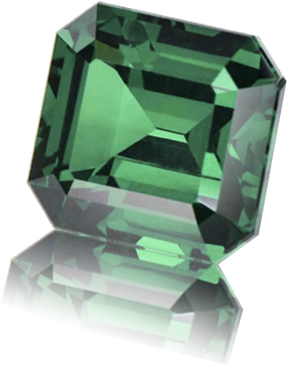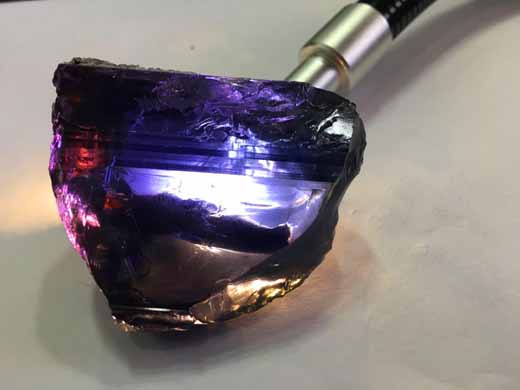

We are currently closed. We will be Re-opening Last Week of November.

It has been a theory touted by many an online and television seller and purveyor of Tanzanite - "Tanzanite is the gemstone investment opportunity of our generation".
Is this really the case or is it simply more marketing hype? This article looks into Tanzanite's potential as an investment vehicle and analyze why it may be considered a viable and effective investment.
Tanzanite's Unique Niche
Firstly, if we look at the gem kingdom as a whole, it
becomes clear that Tanzanite occupies a unique niche. It is one of the world's
rarest gemstones, found in only one place in the whole world - a place called
Merelani, in the foothills of Mount Kilimanjaro, Africa's highest mountain.
Geologists believe that a metamorphic event 500 million years ago provided the
unique set of conditions for Tanzanite to form. The presence of Vanadium and
other important chemicals in the ground combined with the required heat and
pressure sustained over 500 million years, led to the creation of one of
today's most beautiful gemstones. The combined rarity of these factors mean
that the likelihood of Tanzanite occurring and subsequently being discovered in
a different location are highly unlikely. This effectively sets the stage for
the economic reasoning why Tanzanite may be considered a viable and
potentially excellent investment.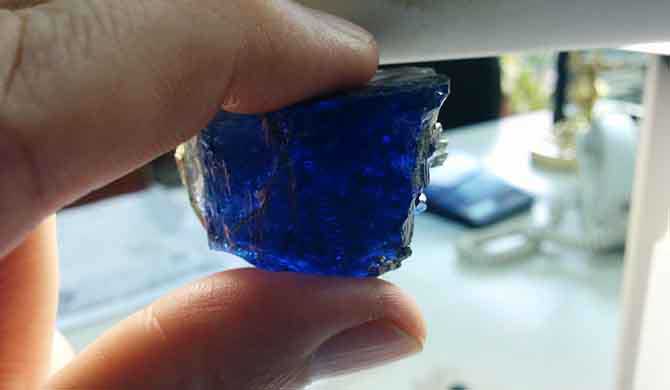
A rare large investment grade Tanzanite rough piece being examined in our offices
Economic Theory - the Demand side
The principal factors advanced by traditional economic theory, that drive economics in a free market economy, are demand and supply. In the case of Tanzanite, both are overwhelmingly in its favour. Demand is growing exponentially for this gemstone. In the US market, the largest market for Tanzanite, the growth is both organic and orchestrated. Organic, driven by consumer's appreciation of this beautiful gemstone and jeweler's subsequent advocation of its qualities, and orchestrated; largely due to voracious marketing on the part of Tiffany & Co. in the early years and more recently by the “Be Born to Tanzanite” marketing campaign looking to make Tanzanite synonymous with the birth of your first child.
If successful, this campaign is expected to have a similar effect on Tanzanite as De Beers' "Diamonds are forever" campaign did on Diamond sales in the mid nineteen hundreds. Their campaign had the effect of making Diamonds synonymous with engagements and diamond rings as symbols of engagement, subsequently driving diamond sales stratospheric. If the campaign to make Tanzanite and Tanzanite jewelry synonymous with the birth of one's first child is similarly successful, the expectation is that the demand side of the equation will be effectively taken care of worldwide.
This factor is also bolstered by Tanzanite's fairly recent
inclusion in the Birthstone list. Tanzanite was named as a birthstone for
December - the first time the list has been altered since 1912. An auspicious
and important factor in assessing Tanzanite's popularity and hence the demand
for this gemstone.
Tanzanite Price History
This video takes a look at Tanzanite price trajectories since its discovery.
Upcoming Markets
Lastly, aside from the world's established gem markets,
there are several new and upcoming markets which are further increasing the
potential demand for Tanzanite, notably India and China. As these markets
develop, gemstones sales in general will benefit enormously, as both cultures
have long standing love affairs with precious stones. More notable is the fact
that both cultures have a love for colored stones with metaphysical properties.
Tanzanite, as a rare and revered gem with connotations that its pure violet
blue depths have healing properties (metaphysically, Tanzanite is said to
activate and integrate the energies of the heart, throat, third-eye, and crown
chakras, creating a condition in which the mind and psychic abilities are
activated and guided by the wisdom of the heart) makes it the natural
choice of an annually growing market of Chinese and Indian buyers. As their
appetite for Tanzanite grows, the increase in demand could be extraordinary.
Economic Theory - the Supply side
The preceding paragraphs have explored and effectively
demonstrated how the demand side of the economic curve is amply catered for in
Tanzanite's case. Just as important, is the supply side however, as an
increasing demand for an item can be amplified immeasurably in economic terms
if it is matched by a corresponding decrease in supply. This is exactly what
is, and has been happening with Tanzanite for some time. Supply is becoming
increasingly limited as the world's only source is mined frantically to keep up
with enormous and growing demand. The result is that the stone is becoming
increasingly difficult to find, especially in the finer qualities which
traditionally constitute less than 1% of total production.
Certainly, in the
many years we have been dealing in Tanzanite, we have noticed an unprecedented
decline in the availability of the very finest stones despite our proximity to
the mines. There simply is very little of this precious material being found
today. Latest geological estimates have indicated that the life of the mines
may only be 10 more years at present production rate but if present market
conditions prevail, we believe that the very finest Tanzanite will become
unavailable long before that.
In Summary
Having explored both sides of the demand/supply equation, it
is clear that with rapidly growing demand and supply shrinking, simple economic
theory dictates that Tanzanite prices will increase substantially. However,
further to our expectation of gradual increases over time, many gemologists and
speculative investors are of the opinion that the stone's real value as an
investment lies in the potential for astronomic prices once it has been
mined out, and the world's enormous demand for Tanzanite can only be
catered for from what exists in private hands. At that point, Tanzanite
values, most especially for the finest material, will be extremely high.
There
are other gemstones with a similar history from which we can draw parallels.
Paraiba Tourmaline, for example, found in the late 1980's in Brazil, mined out
by mid 1990's can now cost as much as US$20,000 per carat. Alexandrite,
found in the Ural mountains of Russia a generation ago and extremely rare in
fine qualities is a similar price. Both stones traded close to Tanzanite prices
do now in the days when they were being mined.
In summary, many factors combine to indicate that Tanzanite is uniquely placed in the gem kingdom to be a potentially excellent investment. Its final and heretofor unmentioned advantage over other investments such as stocks and bonds is that it is a tangible asset - a thing of beauty that can be flaunted and enjoyed as its value increases.
Now that it has become clear that Tanzanite is a potentially excellent investment what do you look for when beginning an investment collection? Below is a series of answers we have provided to various clients asking pertinent questions on this subject over the years:
What quality of Tanzanite should I collect?
Whilst owning any Tanzanite in the years to come when Tanzanite is no longer
mined, will stand you in good stead, most gemologists would recommend compiling
a collection of the finest grade - the rare pieces of exceptional
color saturation that occur in only 1% of Tanzanite. At the simplest of levels
- these stones constitute less than 1% of all Tanzanite production already, so
are considered rare and more valuable by the trade. They also conform to the
industry's standards on colored stones which dictate that the deepest and most
vivid colors are finer.
Whilst some would disagree, and prefer the paler lilac shades, the market tends to conform with the industry standard. Hence, if you own the finest grades as denoted by the industry, you are more likely to realize a better return on your investment when you come to sell.
Lastly, as they are so much more scarce you will have much less competition when selling which always translates into a higher price. Hence in a situation where you have a budget to adhere to, it would be better to resist temptation to go for a larger B grade piece and opt instead for a smaller top grade stone in order to ensure that your collection is made up of fine pieces. Also recommended is to ensure that the stones you buy are true investment grade not simple A grades, which is mostly what is sold online. especially on the larger catalog sites. There is a big difference in rarity and subsequently price. You may want to use our Tanzaite Buying Guide to learn more about how to judge Tanzanite.
Is there a Particular Carat Weight or Size I Should Collect?
This is an excellent question and one without a clear answer as there are 2
schools of thought. The first advocates that the larger the stone the better so
you should go for the largest stones you can afford. The theory behind this
thinking is that these stones are exponentially rarer and therefore will
command collector's attentions better. The other school of thought disagrees
and touts the fact that small Tanzanites in true investment grade are just
as rare as 20+ carat ones (some argue rarer) so a collection made up of very
finest grade 1 to 8 caraters is the best option.
Perhaps a more balanced approach is to recommend a mix of sizes, this way you can have the best of both worlds and if you can't afford a 20 carat piece, then rest assured that your collection of smaller stones, as long as they are the very finest, is just as rare.
Is there a Particular Shape or Cut that is more Valuable and
Better for my Collection?
No, it is purely a matter of personal preference. No particular shape is
considered more valuable or more sought after in the trade and no one cut or
shape that is considered intrinsically more valuable than another. In fact the
cut itself is purely a factor of the shape of the rough - the cutter will
choose the eventual finished cut shape on the shape the rough presents, as this
means the least weight loss and highest yield. What matters in terms of cut is
the quality of the cut itself rather than the shape. Look for fine cutting and
good light return.
Where Should I Buy Tanzanites for my Collection?
With the myriad of opportunities to buy Tanzanite online, on the TV, at retail
stores... it is easy to become confused as to where to get the best deal on the
best stones possible. We would recommend adhering to the following principles
when choosing your source.
Firstly, look for sellers who provide a clear gemological grade for their Tanzanite and do not simply use subjective language. Look for sellers with an in depth knowledge of the gemstone as different grades go for different prices and you don't want to end up paying a top grade price for a single-A stone.
Only go with sellers that offer an unconditional return policy. Lastly, with the recent introduction of cobalt coated Tanzanites always purchase from an experienced, reputable and knowledgeable source.
Antony completed his GG (Graduate Gemologist) in 1998 at the Gemological Institute of America in California after a degree a Business at the University of Bath, in England. He has extensive experience in the colored gemstone trade with over 20 years buying rough at the source. He is currently the Ambassador to Kenya for the ICA (International Colored Gemstone Association) in New York which is the worldwide body for colored gemstones.

A new discovery in the renowned Taita district of Kenya has taken the gem world by storm. We take a look at the new stone and the discovery.
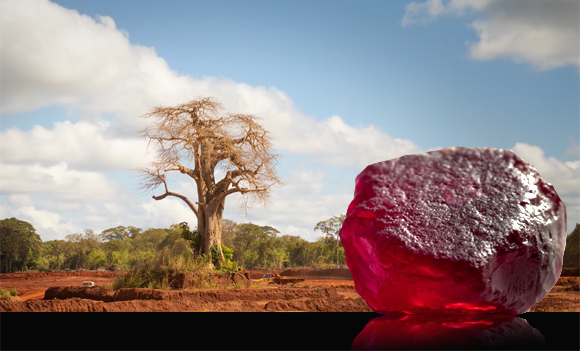
Some of the world's finest and rarest Rubies are now mined in Africa. The traditional sources in Asia have been depleted and there's a new kid on the block. This article delves into the fascinating world of African Rubies, where and how they are mined.
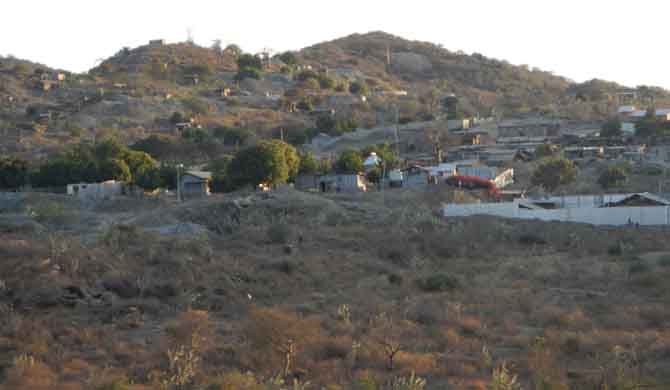
There is a great deal of misinformation currently online regarding what "ethical" Tanzanite mining is. This article explores the different opinions.
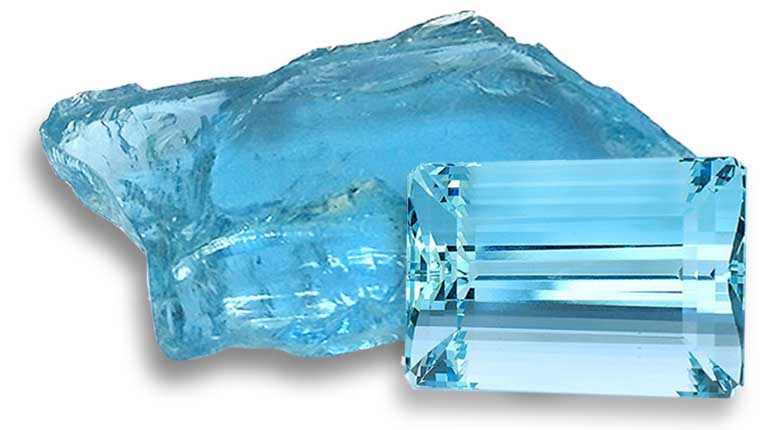
Everything you need to know about Aquamarine Gemstones. Learn all about this beautiful, rare gemstone. Learn about its properties, how to judge quality, pricing, how it is mined, where it comes from and how to spot imitations.
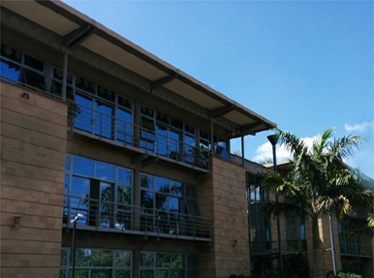

 USA : 1 888 281 3678
USA : 1 888 281 3678 Canada : 1 888 281 3678
Canada : 1 888 281 3678  United Kingdom : 0800 368 6128
United Kingdom : 0800 368 6128 Australia : 1 800 940 788
Australia : 1 800 940 788Direct : +254 20 2641700
Office Hours 9am to 5:30pm Monday to Friday

Direct your questions about shipping, returns,
payments and any other queries

If you can't find what you are looking for in our regular collections,
submit a Special Request and let us cut / source it for you. You will be
notified by email if we find a gem that matches your specs.

Your Product has been successfully added to the cart.

Thank You for submitting a Special Request .
We will notify you by email when we find gems that match your specifications and may interest you.
You can see and manage your special requests in your account by loggin into your account and clicking on the link Special Requests.

MESSAGE SENT
We will respond shortly
ASK A GEMOLOGIST FEATURE
Terms and Conditions of Use
Use of our acclaimed Ask a Gemologist feature which affords you access to certified GIA gemologists is free of charge. However, you agree to the following tenets when you use the Ask a Gemologist feature:
1. You will be signed up as a member of theraregemstonecompany.com with all the rights and privileges of membership.
2. Questions addressed to the Gemologist panel must be related to our business. Questions unrelated to gemstones or jewelry on our website will not be answered.

FRIEND REFERRAL ADDED SUCCESSFULLY
Our system has opened them a Member's Account and sent them
an introduction email. If they purchase off the site, 6% of the sale
will automatically be credited to you EAG Account Statement

NO ITEMS FOUND WITH THAT ID
Thanks for your email .
We will reply shortly.
